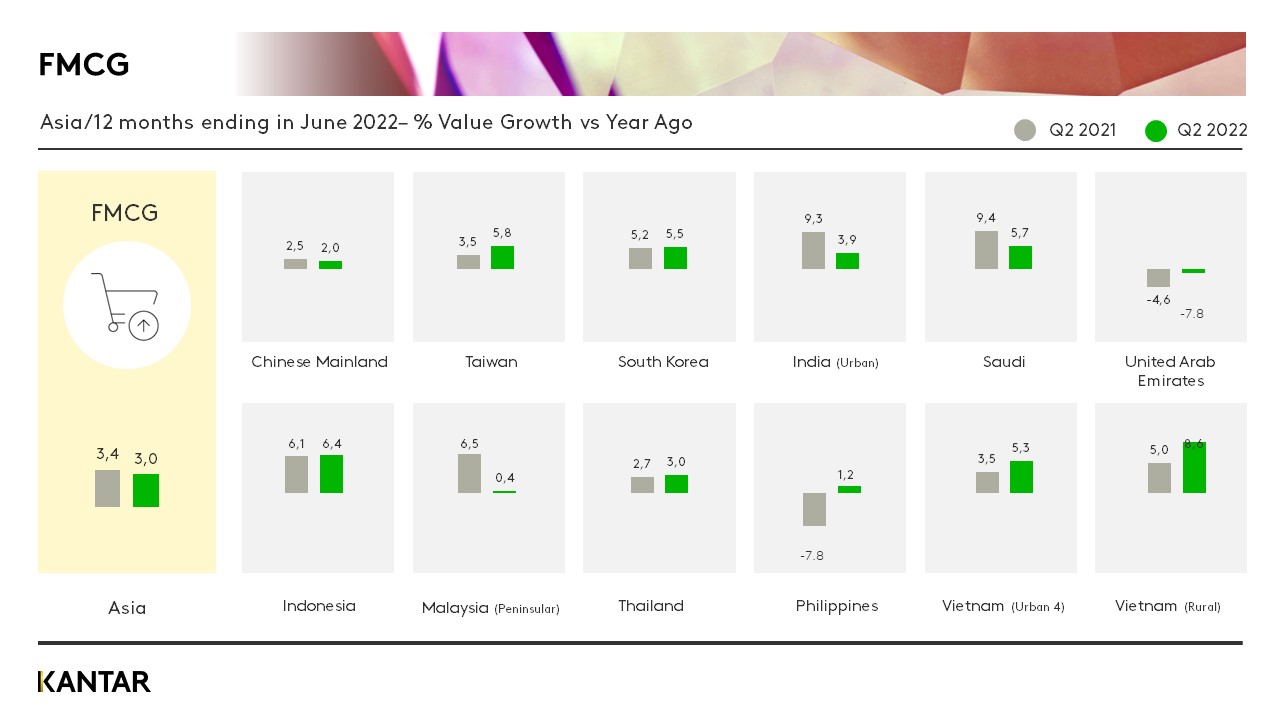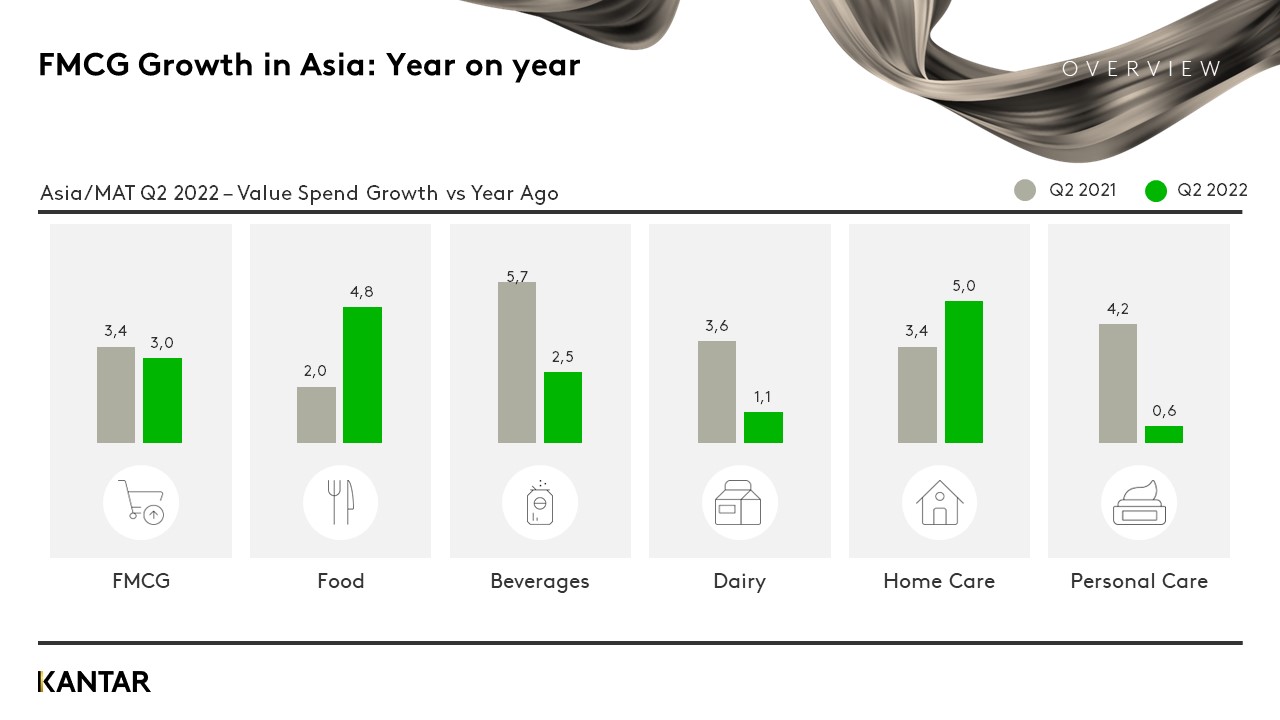The economic turbulence stemming from global inflation is still being felt across Asia, with price increases witnessed in many markets. FMCG value in the region has still managed to post healthy growth of 3% in Q2 of 2022, compared with 3.4% in the same period the previous year, according to Worldpanel’s latest Asia Pulse report. This growth has mainly been driven by Southeast Asia, where the increase in FMCG spend is 1.2 points higher than the overall region.

The food sector continues to lead market growth, with its increase in spend more than doubling from 2% in Q2 of 2021 to 4.8% in 2022. The home care category has also seen a particularly strong upward movement in its value during the second quarter, up 5% compared with a 3.4% rise the previous year.

Reviewing the performance of each market in depth reveals some key insights. Chinese Mainland: Competition has heated up for modern trade retailers due to the significant challenges offline shopping has faced as a result of COVID. This has caused shopping habits to evolve toward faster, closer, and lighter occasions.
- Taiwan: Though the pandemic has eased, shoppers have kept their changed shopping behaviours – lower frequency, with higher spend per trip – which seems to be the new normal.
- South Korea: The online channel has kept expanding its share, with double-digit growth, solidifying its position as a leading channel in the FMCG market.
- India (Urban): To tackle inflation, consumers are seeking promotions, experimenting with brands, shifting to unbranded products, purchasing smaller packs and moving to mass-market products.
- Indonesia: Although consumers had to adjust to higher inflation during Ramadan, the celebration continued to provide a festive uplift for FMCG, with spend returning back to its pre-pandemic level.
- Malaysia (Peninsular): FMCG value managed marginal growth, supported by higher average prices. The food, dairy and home care segments grew thanks to higher consumer spend per trip.
- Saudi Arabia: In a quarter that included Ramadan, shoppers reduced their volume, especially in the food and beverage sectors, but still ended up spending 10.6% more.
- Thailand: While the high rate of inflation is driving market value growth, it has also resulted in buyers purchasing a smaller number of products at a lower price.
- The Philippines: Shoppers are returning to traditional trade and proximity channels, particularly sari-sari stores, where spending has surpassed pre-pandemic levels.
- Vietnam: Spending on in-home FMCG rose in Q2 of 2022 thanks to the increase in average price paid; however, volume consumption remains low.
- United Arab Emirates: Shoppers have ramped up their efforts to manage their wallets by reducing purchase volume by 6% this quarter.
Download the Asia Pulse report, and find out about the FMCG performance at a country and category level, as well as the role each channel plays in the FMCG landscape, looking at shopping occasions and spend per trip. Contact our expert Jason Yu.

